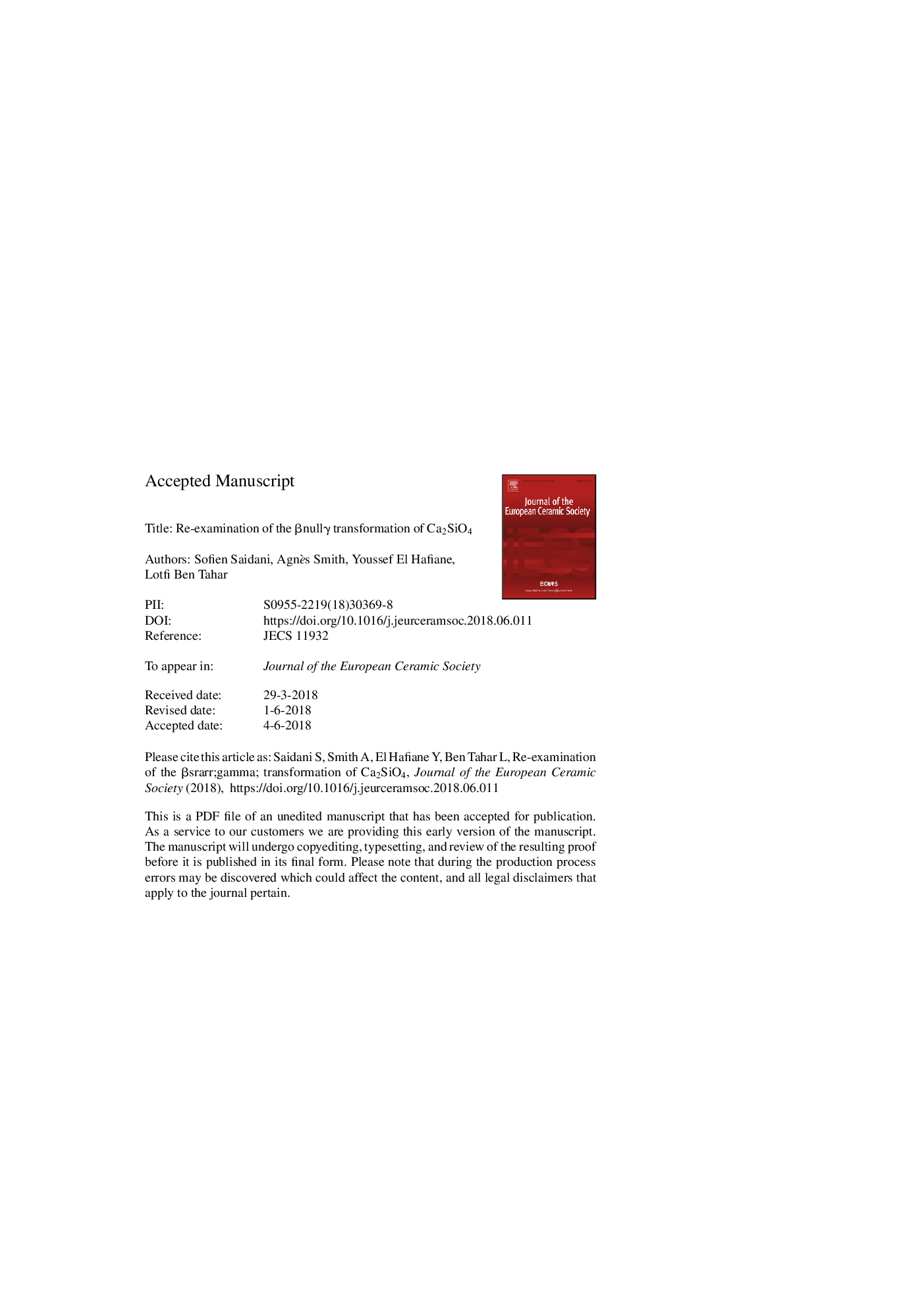| Article ID | Journal | Published Year | Pages | File Type |
|---|---|---|---|---|
| 7897764 | Journal of the European Ceramic Society | 2018 | 33 Pages |
Abstract
Dicalcium silicate finds applications in different fields (cement, bio-ceramics, refractories). In the case of Portland cement, its interest is its lower sintering temperature compared to tricalcium silicate and therefore an interesting compound for low CO2 cements. Dicalcium silicate goes through different polymorphic forms, namely α, α'H, α'L, β and γ, as the temperature decreases. In theory, only the γ-phase is stable at room temperature. In a polycrystalline material, the different polymorphs can co-exist depending on several factors (sintering conditions, presence of impurities, grain size) and the interpretations given in the literature are sometimes contradictory. For cement applications, only the α, α' or β polymorphs react with water to give hydrates while γ does not. Therefore, this paper focuses specifically on the effect of grain size on the β to γ transformation. We also propose that the transformation is semi-reconstructive and not martensitic as suggested by some authors.
Related Topics
Physical Sciences and Engineering
Materials Science
Ceramics and Composites
Authors
Sofien Saidani, Agnès Smith, Youssef El Hafiane, Lotfi Ben Tahar,
